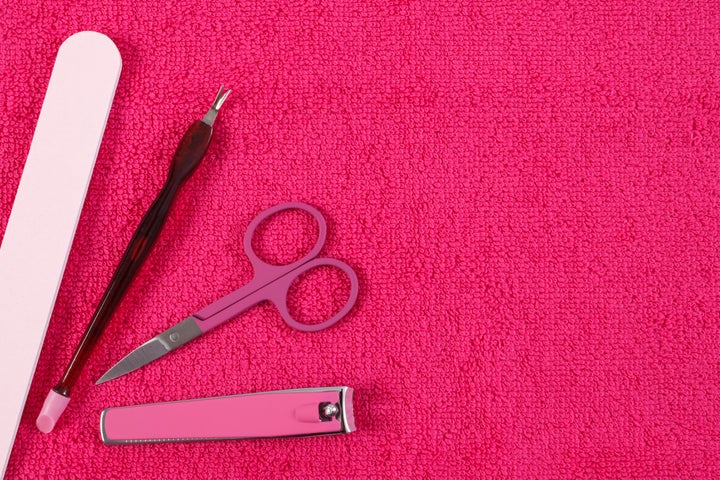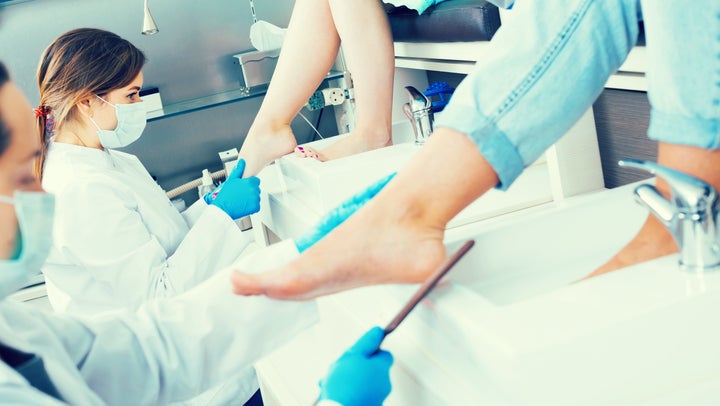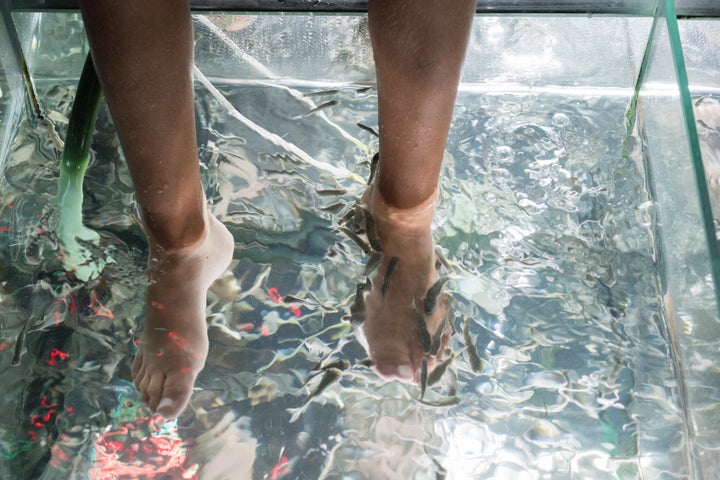
Going to the nail salon for a pedicure can be a relaxing self-care method. From flicking through magazines to playing around with the settings on the massage chair, it’s a brief retreat from the stresses of everyday life. However, it’s not always an entirely painless procedure.
Minor injuries, including cuts and scrapes, are common at the spa. If you have ever experienced an overly aggressive technician or suffered from broken skin during a treatment, it might be time to think about health and safety standards for your pedicure appointment.
Michele Green, a New York-based cosmetic dermatologist and RealSelf contributor, said there are a few potential dangers in pedicure tubs that you should keep in mind.
“There are lots of possible infections that lurk inside the foot basin, including bacteria, fungi and wart viruses,” she explained. “If you get an infection following a pedicure, you should consult your dermatologist, since the area may need to be drained and you may need to be put on oral antibiotics.”
Green added that you may also be at risk for a specific type of infection if your nail technician uses unclean instruments or if you’re soaking in dirty water. The condition, called a paronychia infection, affects the nail bed and can be painful. It’s accompanied by tender, red skin and pus-filled blisters.
And, according to the U.S. Centers for Disease Control and Prevention, there have been incidents of infections from pedicures that left lasting effects, such as boils or scars.
Gross, right? Luckily, there are some simple precautions you can take to ensure you don’t bring back any nasty souvenirs from your spa visit. Take a look at some expert advice below:
Skip the shave.
One safety measure starts before you even leave your house.
“Shave your lower legs after getting a pedicure, not before,” advised the American Academy of Dermatology in a nail safety note. “That means not shaving your lower legs for at least 24 hours before you get a pedicure. If you nick yourself while shaving, a pedicure could put you at risk for an infection.”
Technicians have seen it all and won’t be offended by fuzzy legs at your appointment. It’s also a good idea to postpone your pedicure if you’re dealing with any previous injuries, according to Asma Ahmed, a New Jersey-based double board-certified dermatologist.
“Do not get a pedicure if you have any cuts, bug bites, rashes or open wounds,” Ahmed said.
Bring your own tools.

Green suggested that you consider investing in your own nail kit to bring to appointments if you get regular treatments.
Most salons won’t mind if you bring your own quality tools, although it’s best to check beforehand, she added. Alternatively, you can inspect the salon tools carefully and ask to see where and how they are cleaned and disinfected.
Do a mental inspection.
After checking the tools, look around the rest of the salon, check the foot baths and the seating area, and make sure everything is clean and tidy with clearly designated places for used tools and equipment to be disinfected, Green said. You can also ask to see the staff’s state licenses or certificates.
Overall, don’t be afraid to ask questions about safety and hygiene, Ahmed said.
“The pedicure foot baths and filters should be disinfected with an EPA-registered hospital disinfectant properly between each customer and nightly,” she explained. “The disinfectant requires a specific amount of time to properly work, which is usually about 10 minutes and clearly written on the label.”
Say no to cuticle cutting.

Gently pushing back cuticles reveals a larger nail bed for painting and can make your nails look longer or tidy up scraps of skin. However, cutting cuticles is never recommended.
“When your cuticles are pushed back or cut too aggressively it leaves the skin vulnerable to infection,” Green explained. Cut cuticles also grow back harder, creating a vicious cycle of unnecessary treatment, she added.
Avoid the gimmicks.

Keep it simple with a soak, massage and color. Whatever you do, avoid gimmicky treatments, like fish pedicures. (You know, the trendy ones where tiny fish go after your feet.)
Fish pedicures have gained in popularity since 2010. The treatment involves putting your feet into a tub full of Garra rufa fish, with the idea that the little creatures will eat the dead skin from your feet and leave you with super-smooth toes.
People for the Ethical Treatment of Animals (PETA) raised serious concerns about the welfare of the fish used in these treatments and argued that the fish eat dead skin only because they are starved. The organization also suggested customers are generally unhappy with the experience.
“People who’ve purchased these pedicures have reported bumpy, uneven skin and areas that were bitten deep enough to draw blood,” PETA wrote.
The CDC also raised safety concerns about it, citing on their website that more than 10 states have banned the use of fish pedicures because the tubs are not cleaned properly between customers and because the fish themselves cannot be disinfected.
“Due to the cost of the fish, salon owners are likely to use the same fish multiple times with different customers, which increases the risk of spreading infection,” according to the CDC.
So what happens if you notice anything ― er, fishy ― after your spa trip? Treat it ASAP, Green said.
“Apply a topical antibiotic immediately to prevent an infection from forming,” she explained. And when in doubt, reach out to a doctor.
With a few simple precautions, you can make sure that all you leave your pedicure appointment with is sandal-ready feet.
